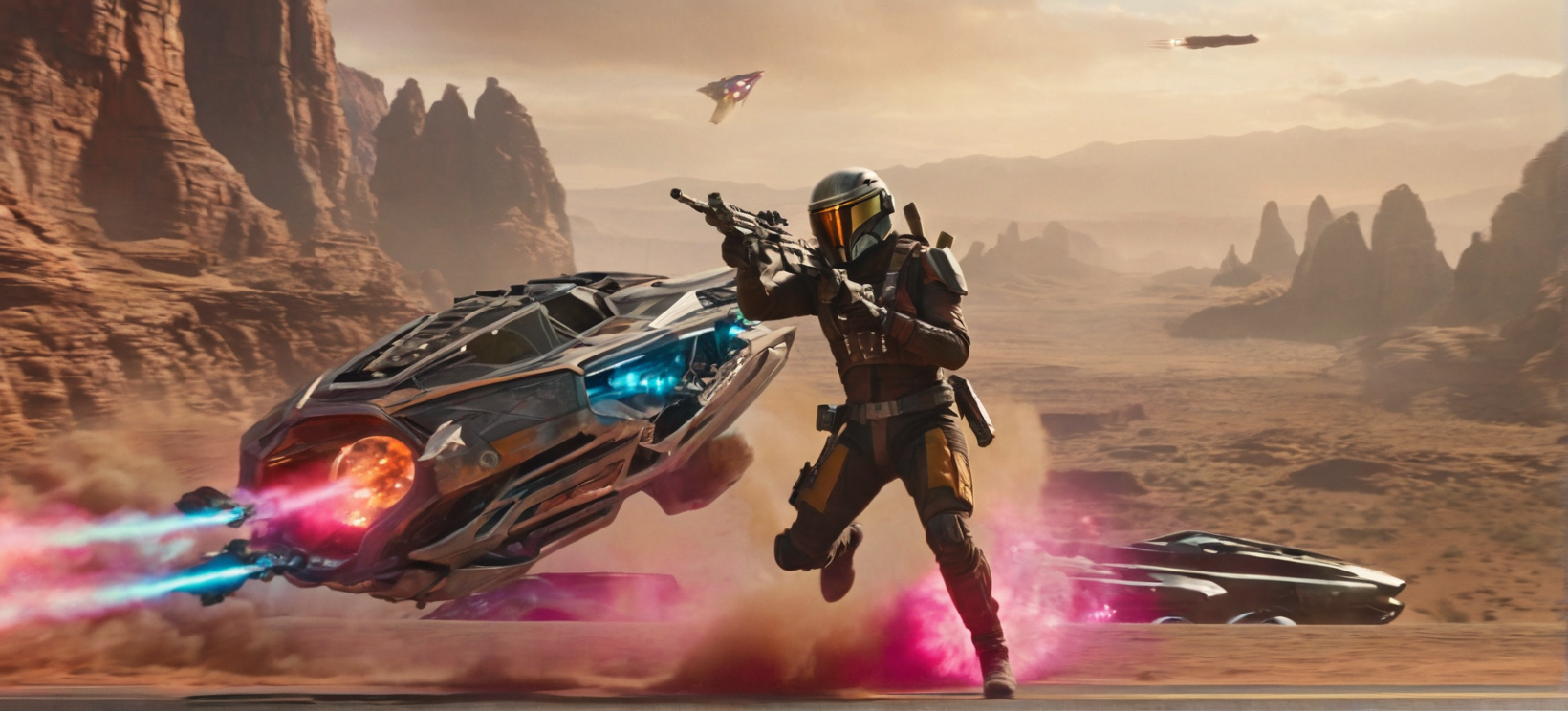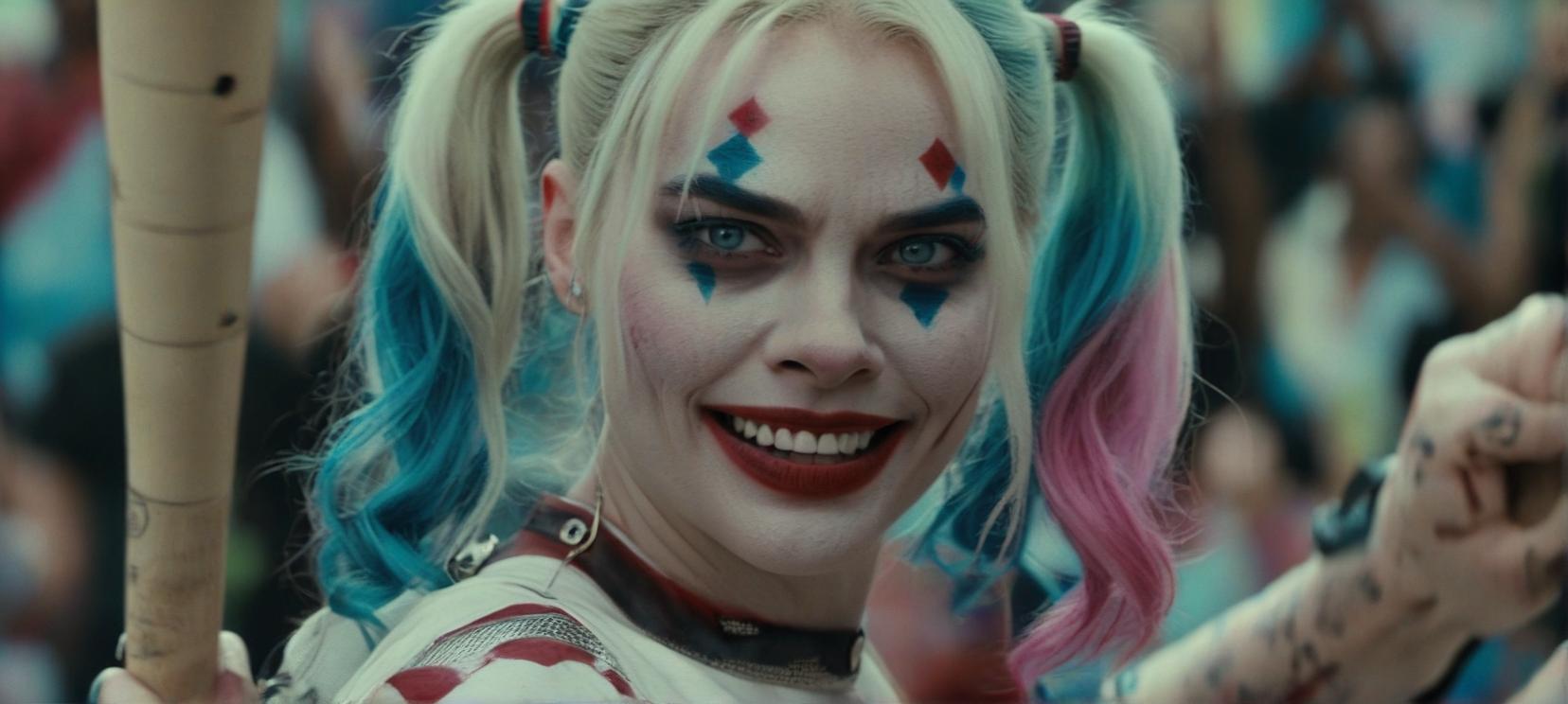cinematic-redmond
Maintainer: fofr

5

| Property | Value |
|---|---|
| Model Link | View on Replicate |
| API Spec | View on Replicate |
| Github Link | No Github link provided |
| Paper Link | View on Arxiv |
Create account to get full access
Model overview
cinematic-redmond is a cinematic AI model fine-tuned on SDXL. Similar models include real-esrgan for real-world image super-resolution, kandinsky-2 and kandinsky-2.2 for text-to-image generation, and deliberate-v6 and reliberate-v3 for a range of text-to-image, image-to-image, and inpainting capabilities.
Model inputs and outputs
The cinematic-redmond model takes in a text prompt, a seed value, the number of steps, image dimensions, a scheduler, a number of outputs, a sampler name, a guidance scale, and a negative prompt. It outputs an array of image URLs.
Inputs
- Prompt: The text prompt to guide image generation
- Seed: A value to initialize the random number generator
- Steps: The number of diffusion steps to perform
- Width/Height: The desired output image dimensions
- Scheduler: The diffusion scheduler to use
- Num Outputs: The number of images to generate
- Sampler Name: The sampler to use for diffusion
- Guidance Scale: The scale for classifier-free guidance
- Negative Prompt: A prompt to guide against unwanted content
Outputs
- Array of image URLs: The generated images as a list of URLs
Capabilities
The cinematic-redmond model can generate highly cinematic and visually striking images from text prompts. It is well-suited for producing fantasy, science fiction, and other imaginative scenes with a polished, professional look and feel.
What can I use it for?
The cinematic-redmond model could be used to create concept art, storyboards, and other visual assets for film, television, video games, and other media projects. It could also be used to generate unique images for website headers, social media content, and other visual marketing materials. The model's ability to produce high-quality, cinematic-style images makes it a valuable tool for creatives and businesses looking to elevate their visual branding and storytelling.
Things to try
Experiment with different prompts, seed values, and other input parameters to see the range of visuals the cinematic-redmond model can produce. Try blending cinematic elements like dramatic lighting, camera angles, and moody atmospheres with fantastical or sci-fi subject matter. You could also attempt to recreate the style of specific films, directors, or genres to see how the model interprets these visual aesthetics.
This summary was produced with help from an AI and may contain inaccuracies - check out the links to read the original source documents!
Related Models

cinematic.redmond

14
cinematic.redmond is a powerful AI model developed by artificialguybr that can generate cinematic, artistic images across a wide variety of themes, including cars, people, and more. It is similar to other cinematic models like cinematic-redmond and can produce high-quality, imaginative visuals. Model inputs and outputs cinematic.redmond takes in a text prompt as the primary input, which is used to guide the image generation process. The model also supports additional parameters such as image size, seed, and inference steps. The output is one or more generated images that match the provided prompt. Inputs Prompt**: The text prompt that describes the desired image Seed**: The random seed to use for image generation (leave blank to randomize) Width**: The width of the output image Height**: The height of the output image Num Images**: The number of images to generate per prompt Guidance Scale**: The scale for classifier-free guidance Negative Prompt**: Text to exclude from the generated image Num Inference Steps**: The number of denoising steps Outputs Generated Images**: One or more images that match the provided prompt Capabilities cinematic.redmond has a strong ability to generate highly detailed, cinematic images across a wide range of themes and styles. The model can create visually striking scenes with a sense of movement and energy, making it well-suited for projects that require imaginative, visually-compelling visuals. What can I use it for? You can use cinematic.redmond to create cinematic images for a variety of applications, such as film and video production, game development, and creative marketing materials. The model's versatility and ability to generate unique, high-quality visuals make it a valuable tool for any project that requires captivating, cinematic imagery. Things to try Some ideas for exploring the capabilities of cinematic.redmond include: Experimenting with different prompts to see the range of styles and themes the model can produce Trying out various input parameters, such as image size and guidance scale, to see how they affect the output Comparing the results of cinematic.redmond to other cinematic AI models like cinematic-redmond to see the unique strengths and capabilities of each model Exploring how the model handles specific subject matter, such as vehicles, landscapes, or character portraits, and seeing how it can bring those elements to life in a cinematic way.
Updated Invalid Date

sdxl-lightning-4step

158.8K
sdxl-lightning-4step is a fast text-to-image model developed by ByteDance that can generate high-quality images in just 4 steps. It is similar to other fast diffusion models like AnimateDiff-Lightning and Instant-ID MultiControlNet, which also aim to speed up the image generation process. Unlike the original Stable Diffusion model, these fast models sacrifice some flexibility and control to achieve faster generation times. Model inputs and outputs The sdxl-lightning-4step model takes in a text prompt and various parameters to control the output image, such as the width, height, number of images, and guidance scale. The model can output up to 4 images at a time, with a recommended image size of 1024x1024 or 1280x1280 pixels. Inputs Prompt**: The text prompt describing the desired image Negative prompt**: A prompt that describes what the model should not generate Width**: The width of the output image Height**: The height of the output image Num outputs**: The number of images to generate (up to 4) Scheduler**: The algorithm used to sample the latent space Guidance scale**: The scale for classifier-free guidance, which controls the trade-off between fidelity to the prompt and sample diversity Num inference steps**: The number of denoising steps, with 4 recommended for best results Seed**: A random seed to control the output image Outputs Image(s)**: One or more images generated based on the input prompt and parameters Capabilities The sdxl-lightning-4step model is capable of generating a wide variety of images based on text prompts, from realistic scenes to imaginative and creative compositions. The model's 4-step generation process allows it to produce high-quality results quickly, making it suitable for applications that require fast image generation. What can I use it for? The sdxl-lightning-4step model could be useful for applications that need to generate images in real-time, such as video game asset generation, interactive storytelling, or augmented reality experiences. Businesses could also use the model to quickly generate product visualization, marketing imagery, or custom artwork based on client prompts. Creatives may find the model helpful for ideation, concept development, or rapid prototyping. Things to try One interesting thing to try with the sdxl-lightning-4step model is to experiment with the guidance scale parameter. By adjusting the guidance scale, you can control the balance between fidelity to the prompt and diversity of the output. Lower guidance scales may result in more unexpected and imaginative images, while higher scales will produce outputs that are closer to the specified prompt.
Updated Invalid Date

nebul.redmond

14
nebul.redmond is a Stable Diffusion (SD) XL finetuned model created by artificialguybr. This model is designed to generate high-quality, cinematic images with a focus on portraits, people, and detailed scenes. It builds upon the capabilities of the original Stable Diffusion model, with additional training to enhance its ability to produce visually striking and realistic outputs. When compared to similar models like cinematic-redmond and cinematic.redmond, nebul.redmond demonstrates a strong ability to generate naturalistic portraits with features like freckles, as well as a broader range of scene types and subject matter. Model inputs and outputs nebul.redmond takes in a text prompt as the primary input, along with several optional parameters to customize the image generation process. These include the desired image size, number of outputs, guidance scale, and whether to apply a watermark. The model then generates high-quality images that aim to match the provided prompt. Inputs Prompt**: The text prompt that describes the desired image Seed**: A random seed value to use for generating the image Width/Height**: The desired dimensions of the output image Num Outputs**: The number of images to generate (up to 4) Guidance Scale**: The scale for classifier-free guidance, which affects the level of detail and faithfulness to the prompt Num Inference Steps**: The number of denoising steps to perform during image generation Negative Prompt**: An optional prompt to guide the model away from unwanted content Apply Watermark**: A setting to enable or disable the application of a watermark to the generated images Outputs Image(s)**: The generated image(s) that match the provided prompt and other input settings Capabilities nebul.redmond is capable of generating a wide range of high-quality, cinematic images with a strong focus on realistic portraits and detailed scenes. Its fine-tuning on the Stable Diffusion XL model allows it to produce output with enhanced visual fidelity, color accuracy, and artistic style compared to the original Stable Diffusion model. What can I use it for? With its ability to generate compelling portraits and scenes, nebul.redmond can be a valuable tool for creative projects, such as concept art, illustrations, and even small-scale commercial applications like social media content or product visualizations. The model's flexibility and customization options make it suitable for a variety of use cases, from personal creative expression to professional-level image generation. Things to try One interesting aspect of nebul.redmond is its ability to generate portraits with intricate details like freckles and unique facial features. You could experiment with different prompts that focus on specific characteristics, such as "portrait of a woman with freckles and ginger hair" or "detailed close-up of a person's face with distinctive features." This can lead to the creation of visually striking and unique images. Additionally, the model's versatility in generating a range of scene types and subject matter beyond just portraits opens up possibilities for exploring different genres and themes, such as fantasy, sci-fi, or even abstract art. By combining various input settings and prompts, you can push the boundaries of what nebul.redmond can create and discover new and unexpected results.
Updated Invalid Date

pulid-base

47
The pulid-base model is a face generation AI developed by fofr at Replicate. It uses SDXL fine-tuned checkpoints to generate images from a face image input. This model can be particularly useful for tasks like photo editing, avatar creation, or artistic exploration. Compared to similar models like stable-diffusion, pulid-base is specifically focused on face generation, while pulid is a more general ID customization model. The sdxl-deep-down model from the same creator is also fine-tuned on underwater imagery, making it suitable for different use cases. Model inputs and outputs The pulid-base model takes a face image as the primary input, along with a text prompt, seed, size, and various other options to control the style and output format. It then generates one or more images based on the provided inputs. Inputs Face Image**: The face image to use for the generation Prompt**: The text prompt to guide the image generation Seed**: Set a seed for reproducibility (random by default) Width/Height**: The size of the output image Face Style**: The desired style for the generated face Output Format**: The file format for the output images Output Quality**: The quality level for the output images Negative Prompt**: Text to exclude from the generated image Checkpoint Model**: The model checkpoint to use for generation Outputs Output Images**: One or more generated images based on the provided inputs Capabilities The pulid-base model can generate photo-realistic face images from a combination of a face image and a text prompt. It can be used to create unique, personalized images by blending the input face with different styles and scenarios described in the prompt. The model is particularly adept at maintaining the identity and features of the input face while generating diverse and visually compelling output images. What can I use it for? The pulid-base model can be a powerful tool for a variety of applications, such as: Avatar and character creation**: Generate unique, custom avatars or character designs for games, social media, or other digital experiences. Face editing and enhancement**: Enhance or modify existing face images, such as by changing the expression, style, or environment. Digital art and illustration**: Combine face images with imaginative prompts to create surreal, dreamlike, or stylized artworks. Prototyping and visualization**: Quickly generate face images to visualize concepts, ideas, or designs involving human subjects. By leveraging the face-focused capabilities of the pulid-base model, you can create a wide range of personalized and visually striking images to suit your needs. Things to try Experiment with different combinations of face images, prompts, and model parameters to see how the pulid-base model can transform a face in unexpected and creative ways. Try using the model to generate portraits with specific moods, emotions, or artistic styles. You can also explore blending the face with different environments, characters, or fantastical elements to produce unique and imaginative results.
Updated Invalid Date